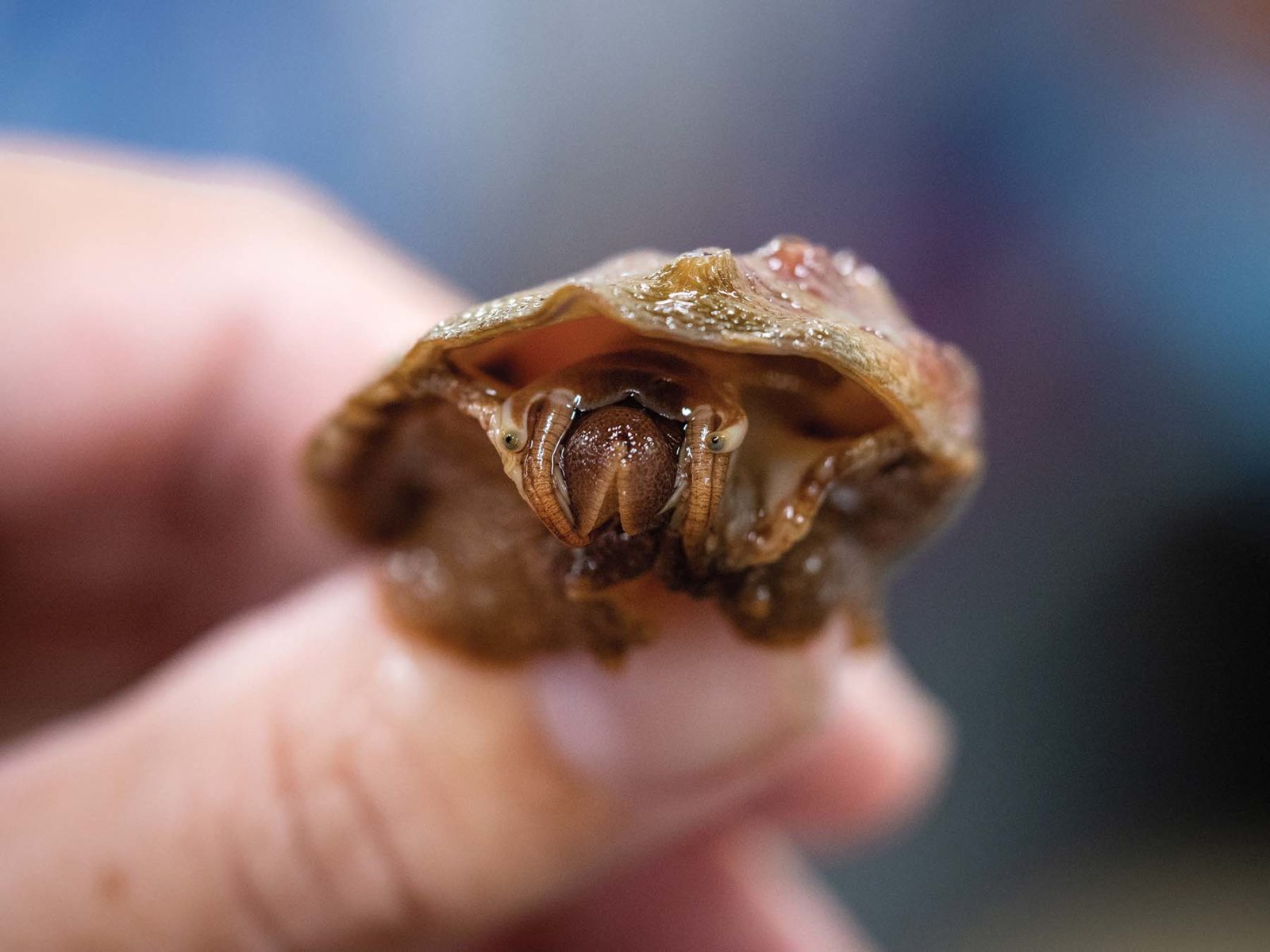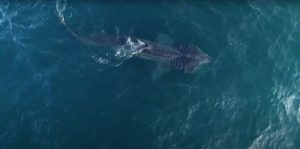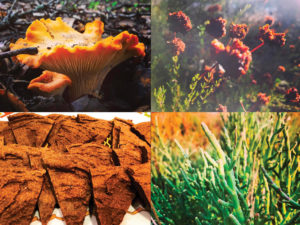The moon glows overhead, brushing the waves with silver as they roll in to shore. Down under the surface, a soft cloud is released into the water. And, close by, another cloud. And then, as the wisps of eggs and sperm from female and male meet and mingle, a baby abalone starts its life. In about a day, it becomes a minuscule larva, reaching out, twisting, tasting this cold, briny liquid that is home. It will feed and drift, and then, as it starts to take its whorled form, it will gently alight on the ocean floor and search for its place to grow, a tiny version of the magnificent sea snail it will become.
One has to see a baby abalone shell to appreciate the wonder of the abalone reaching maturity at all. On full-grown adults, the shells are thick, the rough outer side turned out to the world, positioned for protection to meet waves, ready to clamp down against an ocean rock instantly at the sign of any threat, with the incredible strength of a large, muscular foot. It looks like they could endure anything. But as new beings, they are so tender. The shells of those who die in infancy are wee ovals, little petals of shimmer that float in and catch on the sand at the tidal edge.
When I was a child, abalone were plentiful. I recall being dangled underneath a subtidal rock at low tide so that I could see the red abalone stacked upon each other in the dark. Fishing trips down to the shore with my Coast Miwok and Southern Pomo family were a delight. After a cold morning of fishing that had started at dawn, we would enjoy a luxurious pastime before heading up the cliffs in the afternoon to drive home. The women would painstakingly sift through piles of delicate sun-bleached seaweed that had washed up on one end of the beach, looking for baby abalone shells, carefully cushioning each one in a pill bottle between layers of cotton wool. The smallest shell might cover the head of a straight pin. I remember looking at the miracle of those little treasures. How happy we were to find several in a single morning! This seemed to indicate that the abalone had been successful in their reproductive efforts. Then, over the years, fewer and fewer abalone were found at that beach, and the seaweed piles all but disappeared, and then, the tiny shells were gone.
Abalone are deeply important in Indigenous tribal cultures in California and all along the Pacific coast. They are one of our elder relatives. Abalone Woman moves through the stories of several Tribal Nations. This one-shelled sea mollusk provides nourishment and adornment. Abalone has been a key food source for coastal people for generations. In my family, we eat almost all of the delicious flesh save the viscera, which we ferment to use as a potent fish bait. The interior of an abalone shell is exceptionally beautiful, with a captivating array of sunrise and sunset colors. This dazzling shell is prominent in Native adornment of the Pacific Coast region and also graces baskets and other culturally important objects.
We cannot imagine a world without abalone. We are faced, however, with the hard reality that abalone in California—all seven species—are imperiled at a level we have not seen in human history. Here are their names: black abalone (Haliotis cracherodii); flat abalone (Haliotis walallensis); green abalone (Haliotis fulgens); pink abalone (Haliotis corrugata); pinto abalone, northern form and pinto/threaded abalone, southern form (both Haliotis kamtschatkana); red abalone (Haliotis rufescens); and white abalone (Haliotis sorenseni).
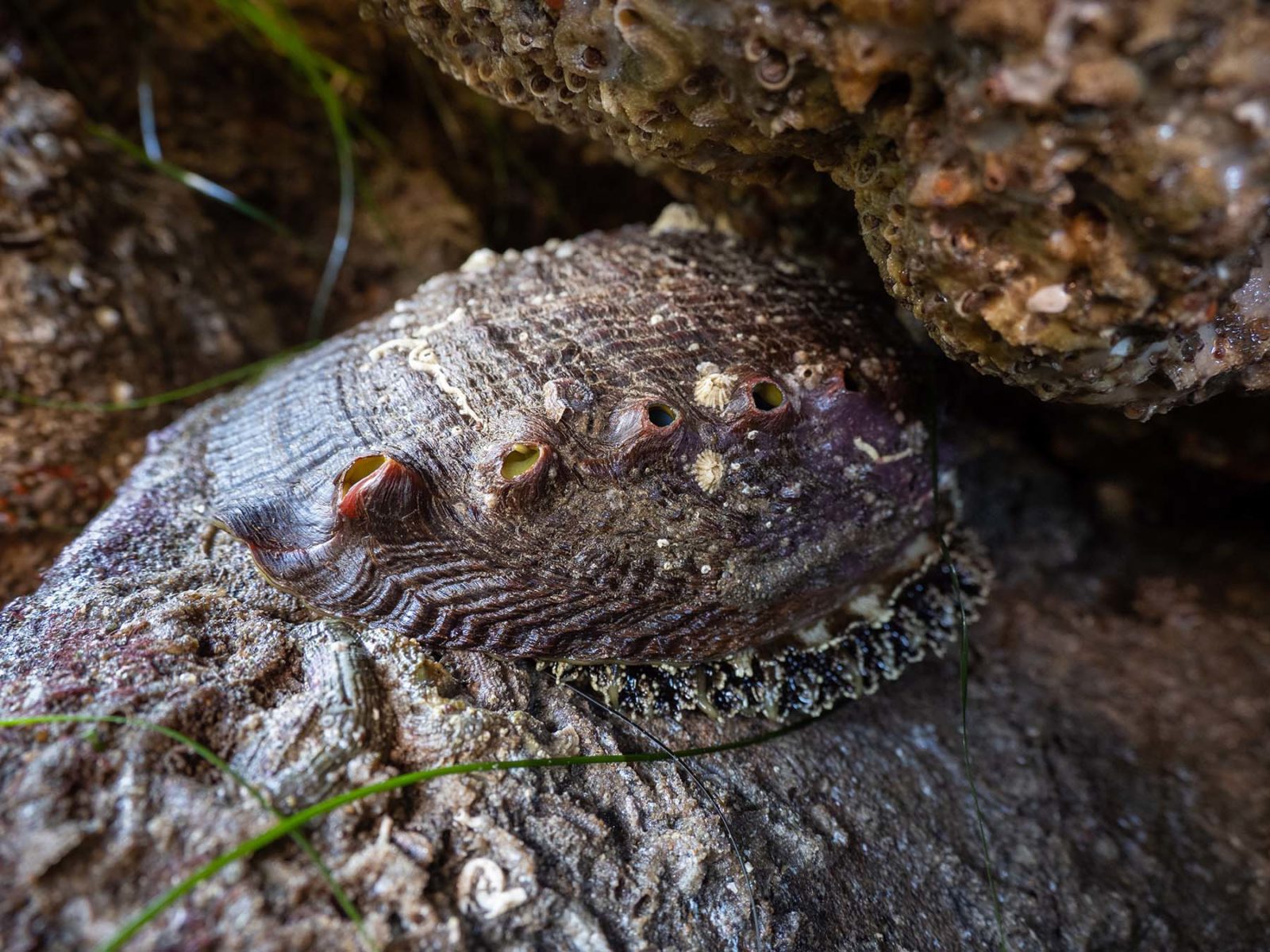
When people ask me about the different abalone species, there is the pang of not knowing these relatives. While it is conceivable that I have touched a black, a flat, or a pinto abalone underwater in our Bay Area region, I have never seen one alive in their natural habitat here. In my family fishing areas, I know some of the habits and preferences of red abalone. Each of the various species along our California coastline has a different life span and lifestyle, if you will. There are remarkable variances in geographic range and preferred depth for each species. Their habitats vary as do the algal (seaweed) communities in those habitats. And finally, what we notice from the shells alone are the distinctions in size, coloration, and general appearance. This is reflected in our tribal stories. Abalone Woman has different colors and shapes and habits, gracing our waters since time immemorial. It is almost beyond thought to consider saying goodbye to her, imagining life without her.
What has led us to this point, where ancient, enduring species are pushed to the edge? It is useful to look at the historic ecological balance and relatively recent human intervention. As an example, consider the close relationship of abalone and sea otters along the California coast. Although otters eat abalone, they also eat sea urchin. Abalone and sea urchin both eat bull kelp. When all forces are in balance, there is harmonious biodiversity. In 1812, the Russian–American Company established an outpost at Fort Ross in Pomo tribal territory, in what is now Sonoma County. By that time, the company had brought in Alaska Native mariners and had been forcing them to hunt sea otters, seals, and sea lions for fur. Their efforts were devastatingly effective. By most accounts, in just a decade or so, sea otter hunting had ceased to be a profitable venture because there were so few animals left.

Traditionally, the interrelationship and equilibrium between species was well understood. It guided the fishing and hunting practices of our ancestors. The imbalance created with the fur trade and continued with contemporary colonization ripples out through the waters today. Sonoma County is home territory for me. I have never seen a sea otter in the open ocean. What I have seen, as a long-term ocean fisher, is the rapid encroachment of purple sea urchins into many of the tidepools that used to host red abalone, the one abalone species I have hunted. Abalone attach to and live on smooth rock. Urchins bore big round niches into ocean rock to make their homes. Abalone lose habitat permanently because of this.
Currently, we have something of a purple sea urchin population explosion. In its ongoing monitoring of the kelp and abalone systems, the California Department of Fish and Wildlife also notes recent ocean heat waves; harmful algal blooms; changing pH levels; and a die-off of sea stars (which prey on purple urchins) as contributing factors in the decline of bull kelp forests. The kelp provides shelter and food for many different species. Imagine a terrestrial forest all but disappearing and you get the picture of what this might look like underwater. Barren, dead land. While there has been a recent resurgence of bull kelp along some parts of the northern coast, one must bear in mind that kelp abundance fluctuates along California’s coastline, particularly dramatically north of San Francisco Bay and south of Point Conception. One big marine heat wave could disrupt a growth surge. To compound habitat issues, abalone have also suffered a fatal disease known as “withering syndrome,” which causes digestive issues that lead to wasting and weakness, then death. And throughout the state, poaching of abalone has persisted over the years, feeding a voracious, highly lucrative black market.
Other species of abalone farther down the California coast were commercially overfished to a critical point. There are archival pictures of huge mounds of abalone shells outside commercial processing operations in cities such as Monterey, San Pedro, and Morro Bay. Along with commercial overharvesting, surges in sport (recreational) fishing further depleted abalone stocks. I know of no Native fishers who have ever sold abalone. We hunt for subsistence. For many of us, the terms “sport fishing” and “recreational fishing” are painful.
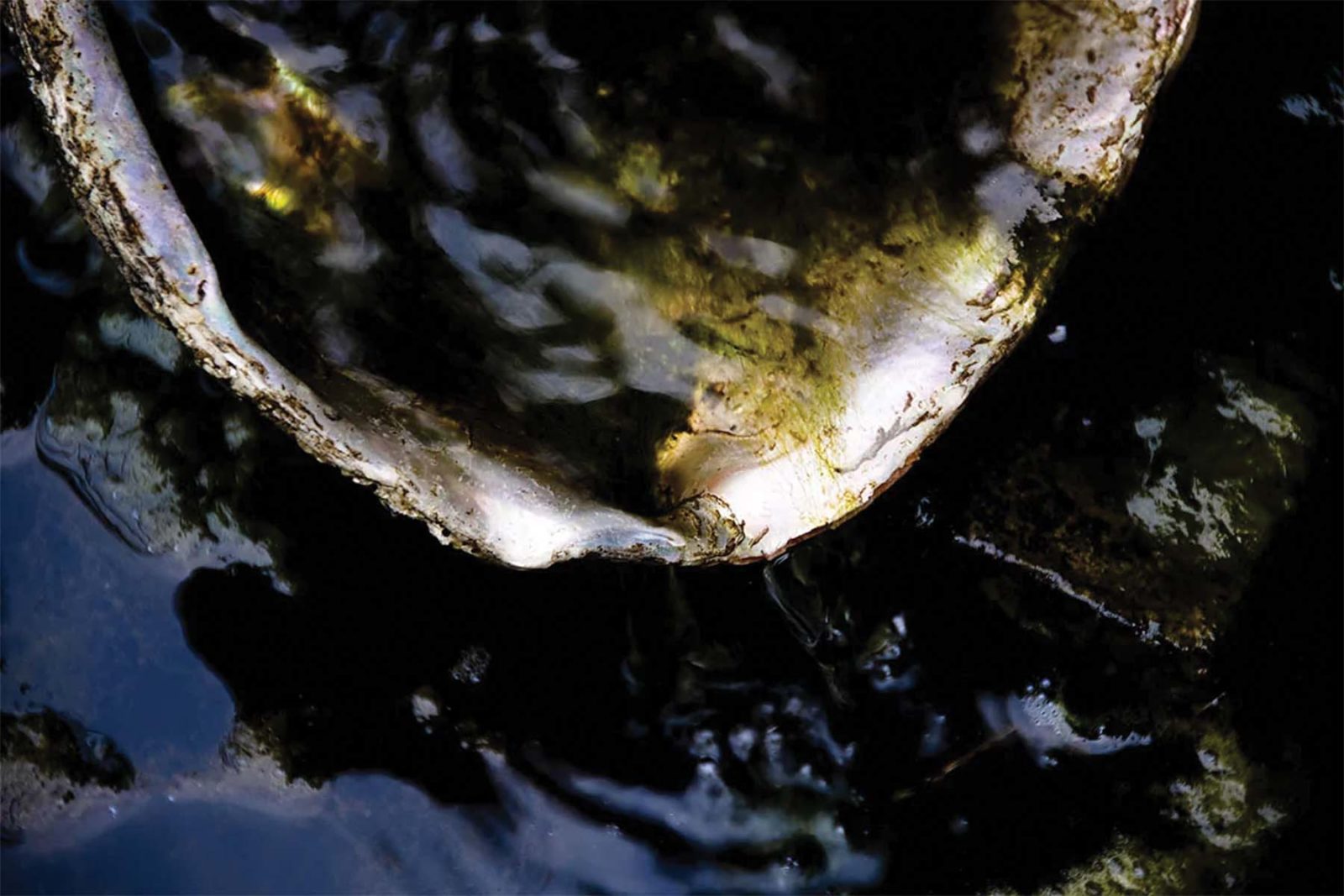
So, now what? Commercial abalone fishing in California is currently outlawed. There is no return in sight. The last species to be legally hunted recreationally was the red abalone. There is now a moratorium on sport fishing for this species until April of 2026. In my family, we had self-imposed our own hiatus a few years earlier. My brother and I had waded out hip-deep at low tide to check the tidepools that we considered to be the abalone “nurseries,” peering upside down under the rocks and gently running our fingertips over the crevices and gaps between them, feeling in the dark for the soft fringe of the abalone, the hard edges of her shell. We sniffed the air around the pools—abalone has a distinctive aroma that can be detected if the animal is relaxed and slightly exposed out of the water. We felt blank, smooth places where they had been. We felt the abandoned urchin niches and only a very few small abalone. On our little section of coast, it was time for us to take a break from hunting. We visit, we talk to the abalone, we pray, but we are not harvesting.
For us, that is the correct response in our area. Up the coast, our tribal cousins maintain their traditional relationship to the abalone. Presumably, they have made a similar examination of the ecosystem and found a healthier population than we did. They continue to hunt. That is the right response for their area. It is what I pray for as well. My concern is that our Elders are right: if we do not hunt and we do not gather, our relations will disappear. And our skills will disappear. I have cousins in their 30s who have never seen or touched a live abalone in the water; do not know how they like to live; and do not know our fishing ways. Another coastal tribe who have recently acquired a gorgeous section of their traditional territory are carefully planning an abalone aquaculture operation to support a research, education, and restoration center. This will be directed toward assisting the red abalone population and other ocean species in regaining strength and vitality. The planning team includes abalone scientists, aquaculture specialists, and engineers for this delicate work. Can it be done? We look to the work underway with the white abalone.
California’s marine biologists have rallied around the white abalone, the most beleaguered species in the state. Although the legal fishery closed in 1996, the population estimate now stands at less than 1 percent of its historic norm. There are simply too few individuals within the ranges needed to have successful reproduction. This species is included in the U.S. Endangered Species List. The few white abalone that still live are characterized as “isolated survivors” by the U.S. National Oceanic and Atmospheric Administration (NOAA). There is a Recovery Team, a coalition of scientists who are doing their best to monitor and protect the populations out in the wild while breeding and nurturing captive populations in marine laboratory settings. This protective upbringing is followed by extremely careful release into the ocean in white abalone ancestral territories. Currently, there are more white abalone living in marine labs than live wild in the Pacific.
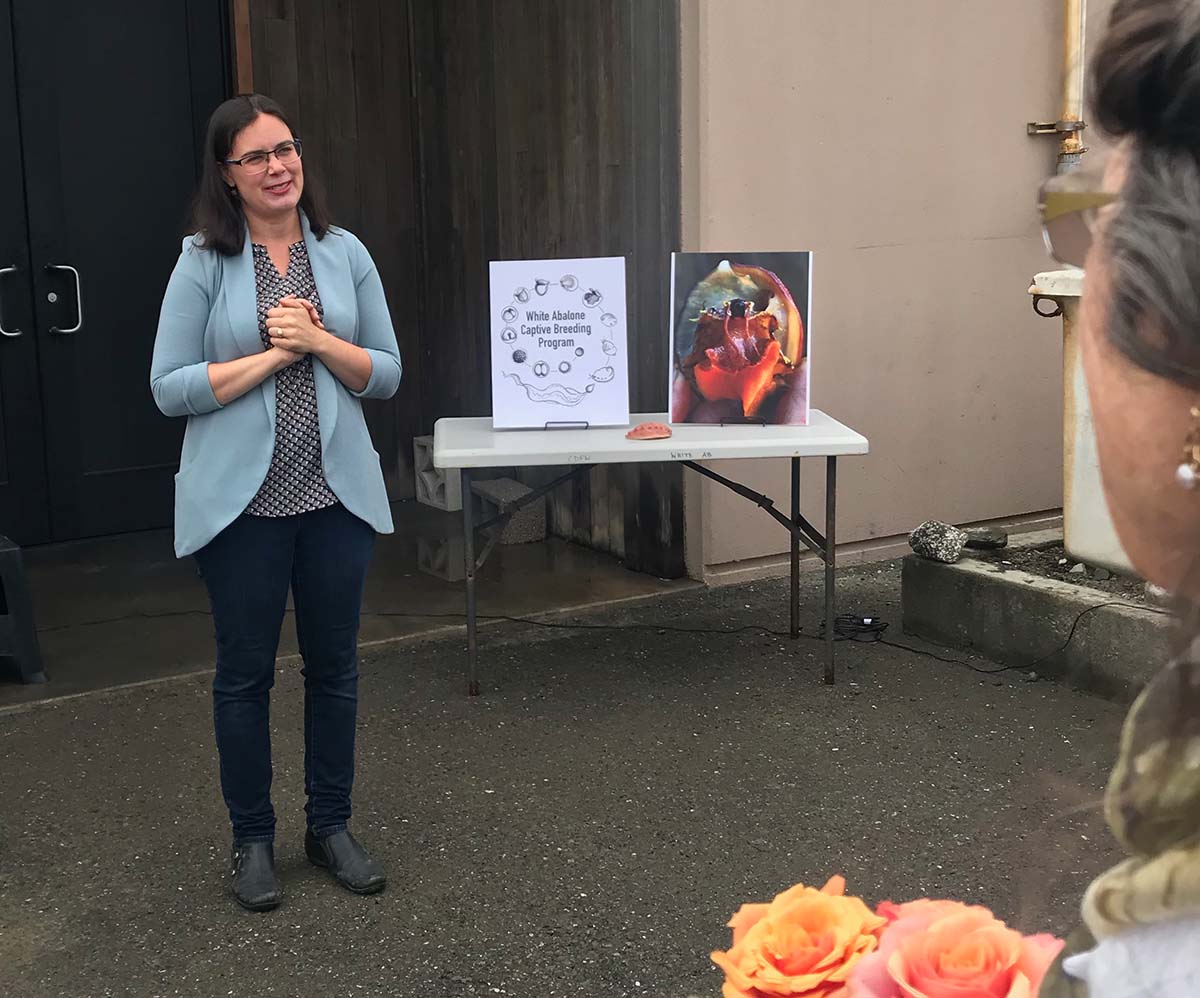
The Bodega Marine Laboratory (BML) in Sonoma County is one of the places where the white abalone are being bred and raised. It is far from their natural home waters of Southern California. Their captive living conditions are calibrated to be as close as possible to the areas in which they will eventually be introduced, with even the lab lighting matching the southern sunrise and sunset conditions. In August 2019, a ceremony and leave-taking were held for the first white abalone to leave Bodega Bay and go home. Three thousand abalone received well-wishes, prayers, and a comeback song in Tongva, the language of the Indigenous people of their southern area. The trip went well. The abalone have been returned to the ocean. Since then, two more joyous send-offs have occurred, one in February 2021, with approximately 11,000 abalone, and one in January 2022 with approximately 7,600 abalone. Now it is a matter of watching and monitoring to see how they adjust and whether they will thrive in their ancestral waters. Thus far, the news is encouraging. Dr. Kristin Aquilino, director for the White Abalone Captive Breeding Program at the BML, says that the field teams report that the abalone are doing well in their ocean habitats. The abalone are believed to be hiding safe from predators, as is customary for these animals. As they grow, they will start occupying more territory and the scientists look forward to seeing more of them.
The white abalone recovery effort is extraordinary, a step toward reversing what once seemed an inevitable slide toward extinction. There are also teams working on kelp recovery in the north, teams of scientists and citizen scientists monitoring what is happening with the urchins and the sea star and the sea otter. It will take huge will, continued effort, and consultation with Indigenous Nations to make the ocean safe again for Abalone Woman and her children. But we must. We are not prepared to say goodbye.
A version of this essay was first published in Vol. 9 of Langscape Magazine, a publication of Terralingua

